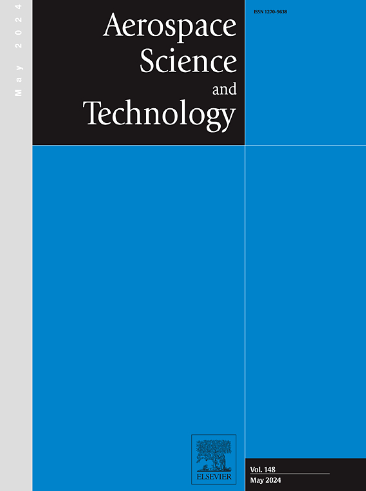Bayesian framework for estimating dynamic stability derivatives in 6-DoF blunt-body entry vehicles
IF 5.8
1区 工程技术
Q1 ENGINEERING, AEROSPACE
引用次数: 0
Abstract
As atmospheric entry vehicles traverse planetary atmospheres, they encounter strongly nonlinear and unsteady aerodynamic loads, leading to uncertain dynamic behavior. Accurate estimation of dynamic stability coefficients is critical for ensuring reliable entry, descent, and landing. This study introduces a Bayesian inference framework coupled with a six-degree-of-freedom dynamic model to estimate these coefficients and quantify their uncertainties using trajectory data. The six-degree-of-freedom model is validated against two benchmark cases, demonstrating strong agreement and establishing its reliability. A two-stage estimation process is employed: (1) Bayesian inference of stability derivatives using Markov Chain Monte Carlo with the No-U-Turn Sampler, based on training cases (), to recover both static () and damping () coefficients; and (2) prediction at untrained test angles (), via Akima spline interpolation of aerodynamic parameters. Applied to the Genesis sample return capsule, the framework accurately reconstructs training trajectories and captures nonlinear damping effects. Predictions at unobserved conditions maintain strong consistency, with only minor discrepancies near the simulation horizon. These results demonstrate the framework's potential as a robust, uncertainty-aware tool for dynamic stability analysis in atmospheric reentry applications.
六自由度钝体飞行器动态稳定性导数估计的贝叶斯框架
大气层进入飞行器在穿越行星大气层时,会遇到强烈的非线性和非定常气动载荷,导致其动力行为的不确定性。动态稳定系数的准确估计是确保可靠进入、下降和着陆的关键。本研究引入贝叶斯推理框架,结合六自由度动力学模型来估计这些系数,并利用轨迹数据量化它们的不确定性。通过两个基准案例对六自由度模型进行了验证,结果表明该模型具有较强的一致性,并建立了其可靠性。采用两阶段估计过程:(1)基于训练案例(αT0=1、5、10、30°),利用马尔可夫链蒙特卡罗和无u型转弯采样器对稳定性导数进行贝叶斯推断,恢复静态系数(Cmα、Cnβ)和阻尼系数(Cmq、Cnr、Clp);(2)在未训练的测试角(αT0=2、20°)下,通过空气动力学参数的Akima样条插值进行预测。将该框架应用于Genesis样本返回舱,可以准确地重建训练轨迹并捕获非线性阻尼效应。在未观测条件下的预测保持了很强的一致性,在模拟视界附近只有很小的差异。这些结果表明,该框架具有强大的潜力,可以作为大气再入应用中动态稳定性分析的不确定性感知工具。
本文章由计算机程序翻译,如有差异,请以英文原文为准。
求助全文
约1分钟内获得全文
求助全文
来源期刊

Aerospace Science and Technology
工程技术-工程:宇航
CiteScore
10.30
自引率
28.60%
发文量
654
审稿时长
54 days
期刊介绍:
Aerospace Science and Technology publishes articles of outstanding scientific quality. Each article is reviewed by two referees. The journal welcomes papers from a wide range of countries. This journal publishes original papers, review articles and short communications related to all fields of aerospace research, fundamental and applied, potential applications of which are clearly related to:
• The design and the manufacture of aircraft, helicopters, missiles, launchers and satellites
• The control of their environment
• The study of various systems they are involved in, as supports or as targets.
Authors are invited to submit papers on new advances in the following topics to aerospace applications:
• Fluid dynamics
• Energetics and propulsion
• Materials and structures
• Flight mechanics
• Navigation, guidance and control
• Acoustics
• Optics
• Electromagnetism and radar
• Signal and image processing
• Information processing
• Data fusion
• Decision aid
• Human behaviour
• Robotics and intelligent systems
• Complex system engineering.
Etc.
 求助内容:
求助内容: 应助结果提醒方式:
应助结果提醒方式:


